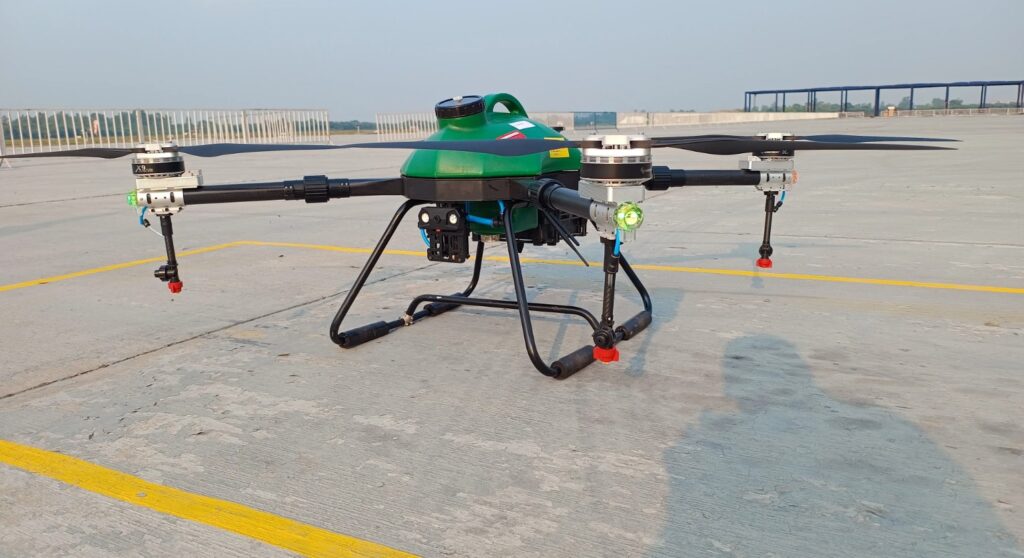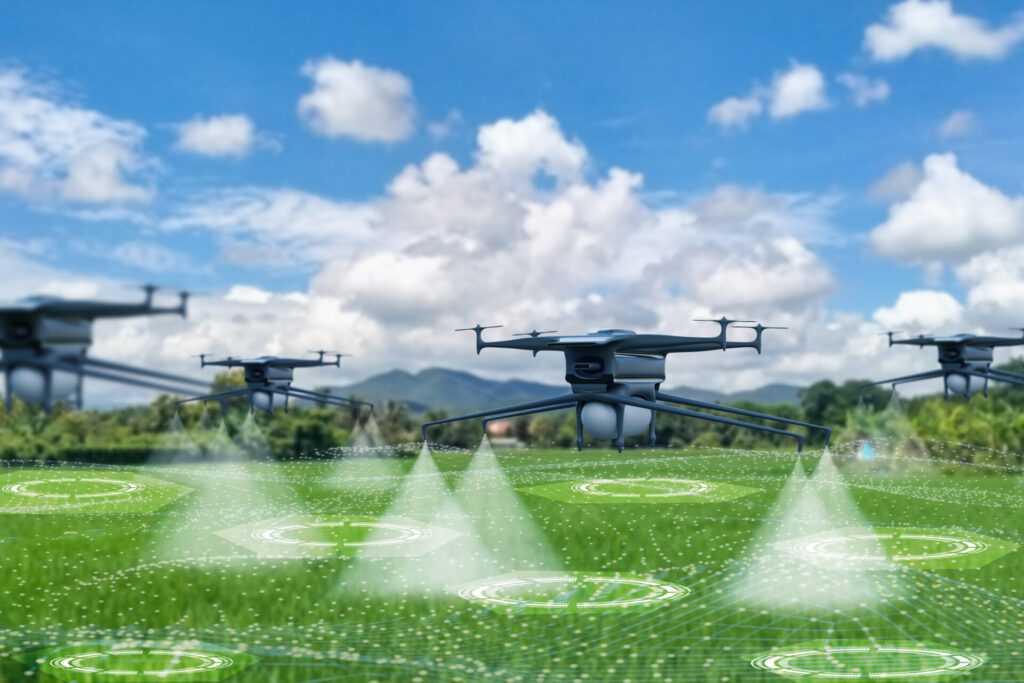


One day, a drone spoke to a human farmer.
ㆍIntelligent drones are autonomously taking over farming tasks to create smart farms.
ㆍAirbots Aerospace, an Indian startup, has developed a 5G fully autonomous drone that can apply pesticides and fertilizers on its own, reducing labor and costs in agriculture.
ㆍThe dangers of drone’s mass destruction: What humanity must keep in mind going forward

It’s too broad and steep!
But drones are capable of handling challenging terrain, showcasing their essential role in smart agriculture. Airbots Aerospace in India has created a fully autonomous drone that can fly over extensive fields to accurately apply pesticides and fertilizers, particularly in uneven, steep, or hard-to-reach areas. This not only saves farmers time and labor, but also safeguards their respiratory and overall health. The benefits of agricultural drones don’t stop there.

What it takes to autonomous flight
First, let’s talk about the appearance of the drone. It resembles a medicine chest on top. The SURYA SHAKTI drone, developed by Airbots Aerospace, has a 15-liter tank capacity. The drone’s main frame is constructed from a combination of carbon fiber and aluminum alloy, resulting in increased strength and decreased weight. This creates a lighter and sturdier drone that can travel faster and cover longer distances. Moreover, the drone is equipped with a front-facing real-time camera featuring a wide 120-degree field of view, along with two high-intensity LED lights for precise operations during the night. The X-shaped wide body structure minimizes shaking during operations, and the foldable design allows for easy transportation of the drone.
How do drones work? Drones operate autonomously and can navigate to their destination without human intervention. They use various sensors such as GPS, infrared sensors, lidar, and cameras to perceive their surroundings and plan their flight path. The companion computer inside the SURYA SHAKTI drone is 5G-enabled to manage the drone and its sensors. Users can also customize the drone’s mission parameters based on crop and terrain characteristics, including pesticide spraying patterns, speed, and altitude. The drone then autonomously sets its targets to survey the farmland and monitor the crops based on the specified parameters. Furthermore, the drone can independently avoid obstacles in the air using the ground control system (GCS).

The good and bad of mass spraying
Just as autonomous drones are used to spray pesticides and insecticides on farms, there is a potential for drones to play a key role in other areas as well. Airbots Aerospace is exploring the concept of “aerial seeding” as its next project. Aerial seeding drones would enable farmers to plant seeds in precise locations based on geolocation without the need for a plow, resulting in significant time and cost savings. Looking ahead, if you find yourself stranded in the high mountains or in a bombed-out war zone that is inaccessible to humans and you need medication or food to survive, an SOS drone could be there in an instant to save your life. However, there is also the potential for drones to be misused for harmful purposes, such as launching chemical attacks. If someone with bad intentions sends an autonomous drone to launch a chemical attack or drop a small weapon, it could lead to a rapid escalation of conflict. Moving forward, a significant challenge will be ensuring that autonomous drones are programmed with a high level of ethics to prevent them from engaging in actions that could cause harm to humanity.
This is why technology should never advance ahead of ethics.

